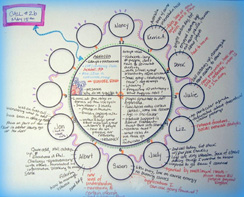Difference between revisions of "Teleconference Clock Method"
From Learning and training wiki
Marco.perone (Talk | contribs) |
Marco.perone (Talk | contribs) |
||
| Line 6: | Line 6: | ||
=='''Preparing a Teleconference Clock'''== | =='''Preparing a Teleconference Clock'''== | ||
| − | *Have an agenda that includes conference goals and participants’ expectations. | + | *Have an agenda that includes conference goals and participants’ expectations. |
| + | *Think about the time zones of participants when scheduling. | ||
*Consider the impact of comments volume (based on the number of participants) with the available time. | *Consider the impact of comments volume (based on the number of participants) with the available time. | ||
*Send all participants the dial-in number and pass-codes if needed. With international groups, be clear if the number is cost-free. | *Send all participants the dial-in number and pass-codes if needed. With international groups, be clear if the number is cost-free. | ||
Revision as of 16:40, 9 December 2009
| Method designed to assist moderators to regulate and facilitate the interaction between participants during conference calls. The Teleconference Clock creates a speaking sequence for introducing each participant: people are given a place on the clock as a mechanism to ensure that everyone has a chance to speak. The “clock” is used to encourage participation on conference calls or structured online chats involving more than four people. [1] |
Preparing a Teleconference Clock
Step by Step
General Call Etiquette
Job Aid |
References
- ↑ www.fullcirc.com (26 November 2009),www.ilo.org (26 November 2009), www.kstoolkit.org (26 November 2009)
- ↑ www.fullcirc.com/wp/2008/03/14/using-the-clock-on-telecons (26 November 2009)
